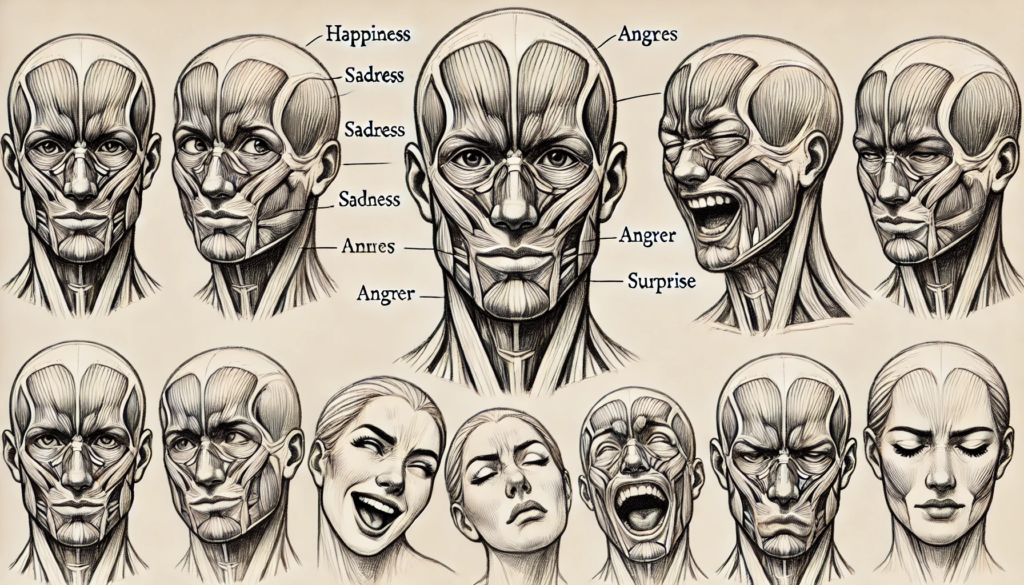
Understanding how facial features and expressions can reflect an individual’s personality, emotions, and even thoughts has been a subject of interest in psychology and neuroscience for decades. Recent advancements in facial recognition technology and psychological research have provided deeper insights into this phenomenon. This article explores what scientific evidence says about reading a person’s character through their face.
Table of Contents
- 1 1. The Science Behind Facial Expressions and Personality
- 2 2. Facial Features and Personality Traits
- 3 3. Resting Face: A Window to Subconscious Tendencies
- 4 4. The Connection Between Empathy and Reading Faces
- 5 5. Microexpressions: Insights into Hidden Thoughts and Feelings
- 6 6. Limitations and Ethical Considerations
- 7 7. Conclusion: More Than Meets the Eye
1. The Science Behind Facial Expressions and Personality
Facial expressions are not just reflections of our current emotional state but are also influenced by our personality traits. Research in the field of Facial Action Coding System (FACS) suggests that our habitual facial expressions can reveal underlying personality characteristics. For instance, people who frequently display genuine smiles, characterized by the activation of the muscles around the eyes, are often perceived as more approachable and emotionally stable [Ekman, 2003].
2. Facial Features and Personality Traits
Studies in physiognomy, the practice of assessing a person’s character or personality from their outer appearance, especially the face, suggest that certain facial features are statistically associated with specific traits. For example, a study published in the Journal of Personality and Social Psychology found that wider faces are linked to traits such as dominance and aggression, while softer, more rounded features are associated with kindness and empathy [Carré, 2010].
3. Resting Face: A Window to Subconscious Tendencies
The concept of “resting face,” popularized by the term “resting bitch face” (RBF), indicates that neutral expressions can also convey unintended emotional cues. Researchers have found that resting faces with subtle muscle contractions can be misinterpreted as expressions of contempt or anger. This phenomenon is linked to subconscious tendencies and can influence how others perceive one’s character and mood [Noldus, 2016].
4. The Connection Between Empathy and Reading Faces
The ability to accurately read emotions and intentions from facial expressions is closely linked to empathic accuracy. Individuals with higher levels of empathy are generally better at interpreting subtle facial cues. This skill is not only related to interpersonal relationships but also has evolutionary roots in social bonding and survival [Decety, 2004].
5. Microexpressions: Insights into Hidden Thoughts and Feelings
Microexpressions, which are involuntary facial expressions that occur within a fraction of a second, can reveal true emotions that a person might want to hide. Training in recognizing these fleeting expressions can provide insights into a person’s hidden thoughts and feelings. Studies suggest that people who are adept at reading microexpressions tend to have better emotional intelligence and social skills [Ekman, 2009].
6. Limitations and Ethical Considerations
While the study of facial expressions and features offers fascinating insights, it’s important to acknowledge the limitations and ethical considerations. Assumptions based on facial features alone can lead to biases and stereotyping. Furthermore, factors like culture, context, and individual variability play significant roles in how expressions are formed and interpreted [Zebrowitz, 1997].
7. Conclusion: More Than Meets the Eye
Our faces are complex and dynamic canvases that reflect a multitude of factors including genetics, emotions, personality, and social conditioning. While science provides tools to decode some of these elements, it is crucial to approach face-reading with an open mind and consider the broader context. The ability to read a face is indeed linked to empathy, but it also requires a deep understanding of human diversity and individual nuances.
Understanding what a person’s face reveals is a fascinating blend of art and science, and continuing research will undoubtedly unveil even more about the connections between our faces and who we are inside.